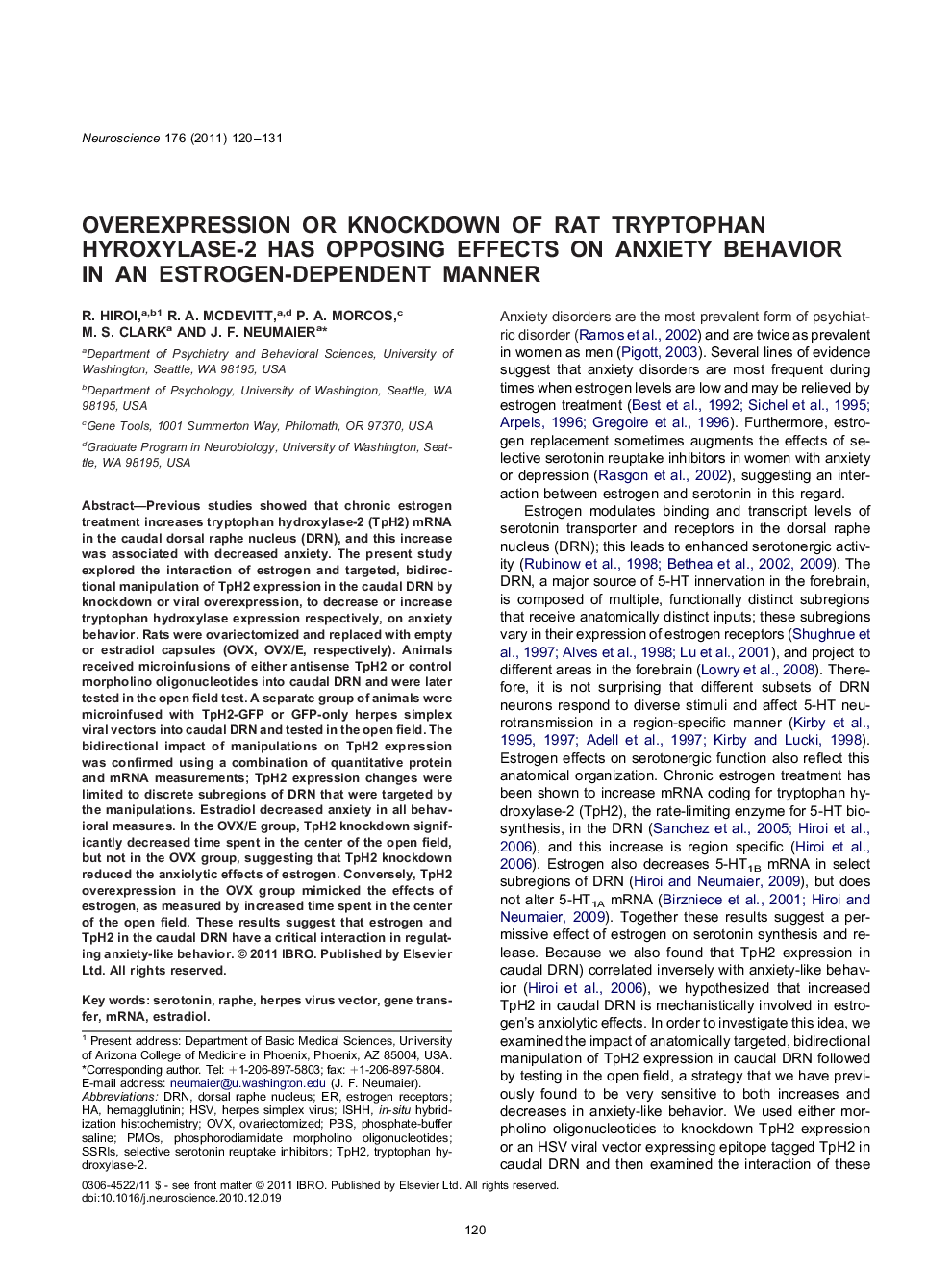| کد مقاله | کد نشریه | سال انتشار | مقاله انگلیسی | نسخه تمام متن |
|---|---|---|---|---|
| 6276664 | 1614900 | 2011 | 12 صفحه PDF | دانلود رایگان |

Previous studies showed that chronic estrogen treatment increases tryptophan hydroxylase-2 (TpH2) mRNA in the caudal dorsal raphe nucleus (DRN), and this increase was associated with decreased anxiety. The present study explored the interaction of estrogen and targeted, bidirectional manipulation of TpH2 expression in the caudal DRN by knockdown or viral overexpression, to decrease or increase tryptophan hydroxylase expression respectively, on anxiety behavior. Rats were ovariectomized and replaced with empty or estradiol capsules (OVX, OVX/E, respectively). Animals received microinfusions of either antisense TpH2 or control morpholino oligonucleotides into caudal DRN and were later tested in the open field test. A separate group of animals were microinfused with TpH2-GFP or GFP-only herpes simplex viral vectors into caudal DRN and tested in the open field. The bidirectional impact of manipulations on TpH2 expression was confirmed using a combination of quantitative protein and mRNA measurements; TpH2 expression changes were limited to discrete subregions of DRN that were targeted by the manipulations. Estradiol decreased anxiety in all behavioral measures. In the OVX/E group, TpH2 knockdown significantly decreased time spent in the center of the open field, but not in the OVX group, suggesting that TpH2 knockdown reduced the anxiolytic effects of estrogen. Conversely, TpH2 overexpression in the OVX group mimicked the effects of estrogen, as measured by increased time spent in the center of the open field. These results suggest that estrogen and TpH2 in the caudal DRN have a critical interaction in regulating anxiety-like behavior.
Research highlightsâ¶We examine the role of TpH2 in caudal DRN in estrogen-induced anxiolysis. â¶Estrogen-induced increase in DRN TpH2 mRNA is associated with decreased anxiety. â¶TpH2 overexpression mimics, while knockdown reduces anxiolytic effects of estrogen.
Journal: Neuroscience - Volume 176, 10 March 2011, Pages 120-131